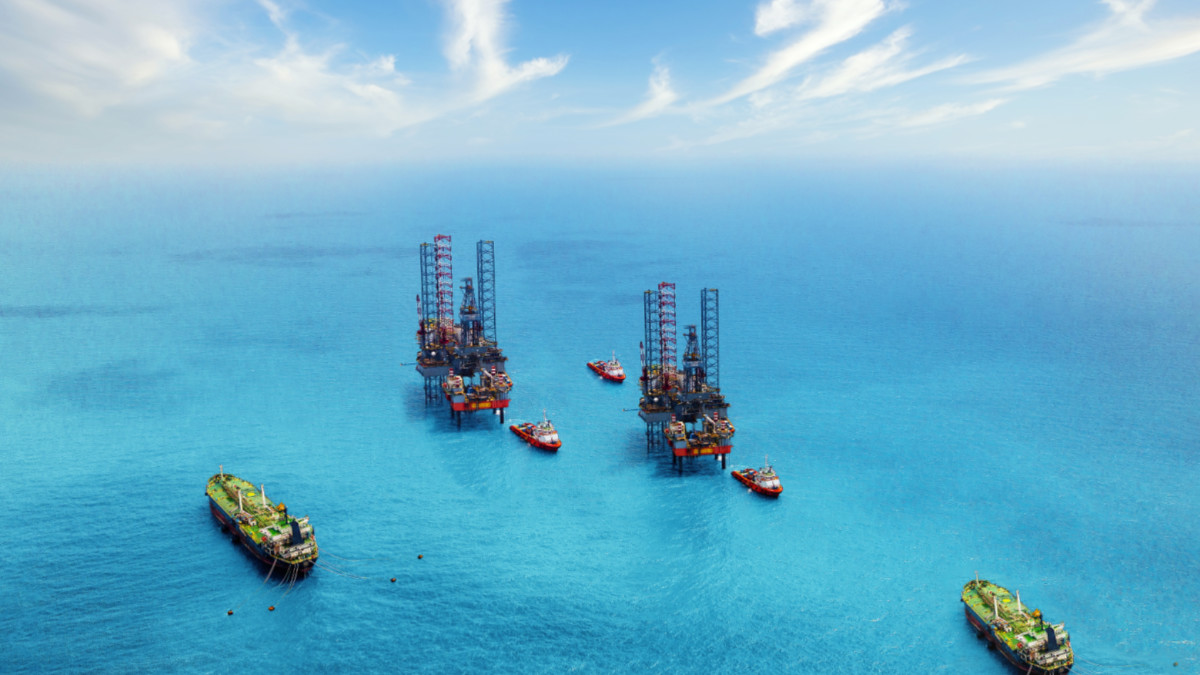MoneyTalks: This fund manager sees a niche opportunity in the ASX offshore oil sector

This fund manager reckons the demise of oil has been exaggerated and there's a unique opportunity in the ASX offshore oil sector. Picture: Getty Images
MoneyTalks is Stockhead’s regular recap of the ASX stocks, sectors and trends that fund managers and analysts are looking at right now. In this edition we’re looking at the ASX offshore oil sector.
Today we hear from Michael Goldberg, executive director at Collins Street Value Fund.
He says while oil has a reputation as an ESG pariah, the talk of its demise – or at least the speed of it – has been greatly exaggerated.
“When you’re looking at oil in general there’s a strong view that it’s an unattractive space to invest in. I’ve heard it said many times that the transition from fossil fuel vehicles for commercial vehicles to EVs will massively disrupt the industry,” Goldberg told Stockhead.
“I think while there is some truth to the statement that we will see a transition to electric vehicles over the next decade or two, most investors misunderstand the impact it would have on the oil space. It’s not as diabolical or excessive as investors think.”
Goldberg says a far higher proportion of oil consumption comes from industrials and manufacturing.
One example is the petrochemical industry which uses petroleum as a raw material (a feedstock) to make products such as plastics, polyurethane, solvents, and hundreds of other intermediate and end-user goods.
“So even if we did see the whole world go to EVs, it’s not going to have the impact on the space people anticipate,” he said.
Between 2014 and COVID-19 oil prices were mostly in a downward trajectory. But after a brief stint in negative territory, prices are rising again and are currently at 2018 levels.
Offshore oil represents an opportunity
But Goldberg thinks the day rates companies servicing the offshore rigs are charging are just as important.
Examples include not just maintenance companies but companies providing cranes, submarines and transport services for workers.
“They were moving backwards for a long, long time; in the last quarter we finally started to see day rates go up but the market hasn’t reacted,” he said.
“I think the reason the market hasn’t reacted is they’re focused exclusively on the demand side. I accept demand will trickle lower over the next decade or two but from all the global experts, we anticipate that at least until 2030, demand will be stable if not growing.
“But supply has essentially fallen off a cliff because of the ESG considerations, and because of the way the world [is] going green, most big oil companies and businesses have been hesitant to put capital towards new projects.
“Both because for anticipation of demand coming off, but repercussions from investors of getting into fossil fuels, additionally banks have been hesitant to lend money to the space.
“What this has effectively done is we’re in a strange situation where demand goes up in the short term, yet no projects are able to come on – which means competition in the space, which would normally increase, isn’t increasing at all.”
Goldberg says consolidation is happening across the sector and these companies will be able to charge higher fees.
“All of these sorts of companies are in a space where there’s no incoming competition but over the next 5-10 years there’s a good chance their margins will increase substantially.
“Again it’s a cyclical industry and it seems to be that things are on the improve at the moment, yet service companies have a positive double whammy – not only are they exposed to the turnaround in the oil space but they are also exceptionally cheap on a valuation basis.”
MMA Offshore (ASX:MRM)
Goldberg says this is the only ASX company in the offshore oil services sector.
MMA, whose speciality is marine and subsea services, underwent a restructure in 2017 which involved it raising $100 million.
“They’re now trading on one-third of their net tangible assets – it’s not uncommon in the space, at bottom of the cycle these companies tend to trade at less than value of their assets if they were to wind things up,” he explained.
“Yet if you wind the clock back to 2013-14 these same companies were two times book value.
“So, we’re not holding our breath for that massive turnaround, [we’re] not expecting MMA should be two times book value, but we think it’s reasonable to expect a value of 50-75% of its value.
“In which case you’d make a tremendous return just on that turnaround not putting any value into the earnings, which is likely to increase as the market consolidates or improves.”
MMA Offshore (ASX:MRM) share price chart
But isn’t offshore oil a small segment?
Goldberg says it is often conceived that offshore oil is just as emissions intensive as onshore oil, and only a fraction of the oil industry – as well as the ASX oil sector – but neither is true.
“We think [of] offshore as being a niche sort of sector but offshore oil actually accounts for 50% and also this is a bit sort of ironic. People think of oil as highly carbon intensive industry and very environmentally unfriendly but as far as oil production goes, offshore production is one of the lowest carbon emitting forms of oil available in the world by quite a margin.
“It’s also the cheapest form of production.
“But it’ll be interesting to see over next 15-20 years – it’s hard for new people to come in the industry given there’s no financing for it and it’s difficult to pitch shareholders to be investing in [and] it’ll be difficult to see consolidation in industry – how margins improve and how we go from where we are today to the potential winding down of fossil fuels.
“I’m not buying necessarily buying into the concept that fossil fuels will be wound down in my lifetime. Even if you want to make the case, it’s still going to be a lot of hits between here and there.”
The views, information, or opinions expressed in the interviews in this article are solely those of the interviewee and do not represent the views of Stockhead.
Stockhead does not provide, endorse or otherwise assume responsibility for any financial product advice contained in this article.

UNLOCK INSIGHTS
Discover the untold stories of emerging ASX stocks.
Daily news and expert analysis, it's free to subscribe.
By proceeding, you confirm you understand that we handle personal information in accordance with our Privacy Policy.








